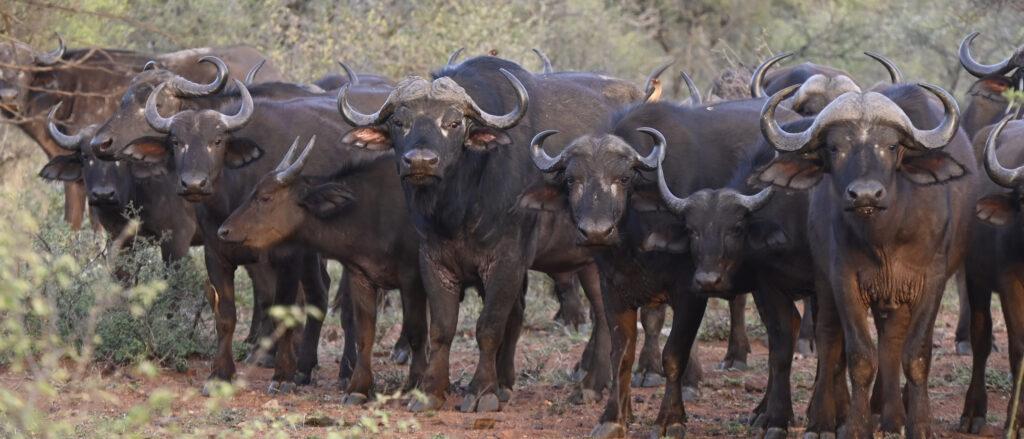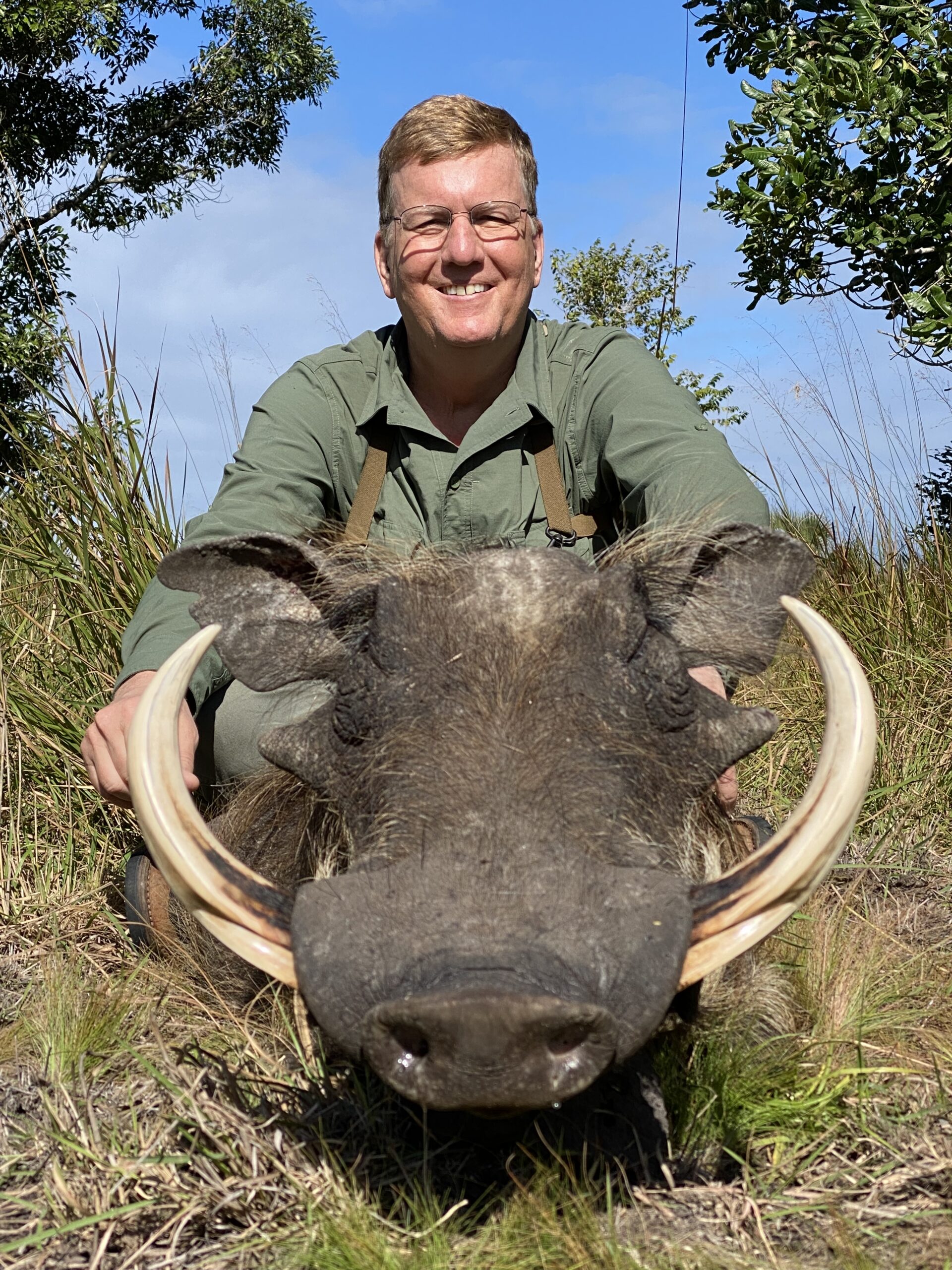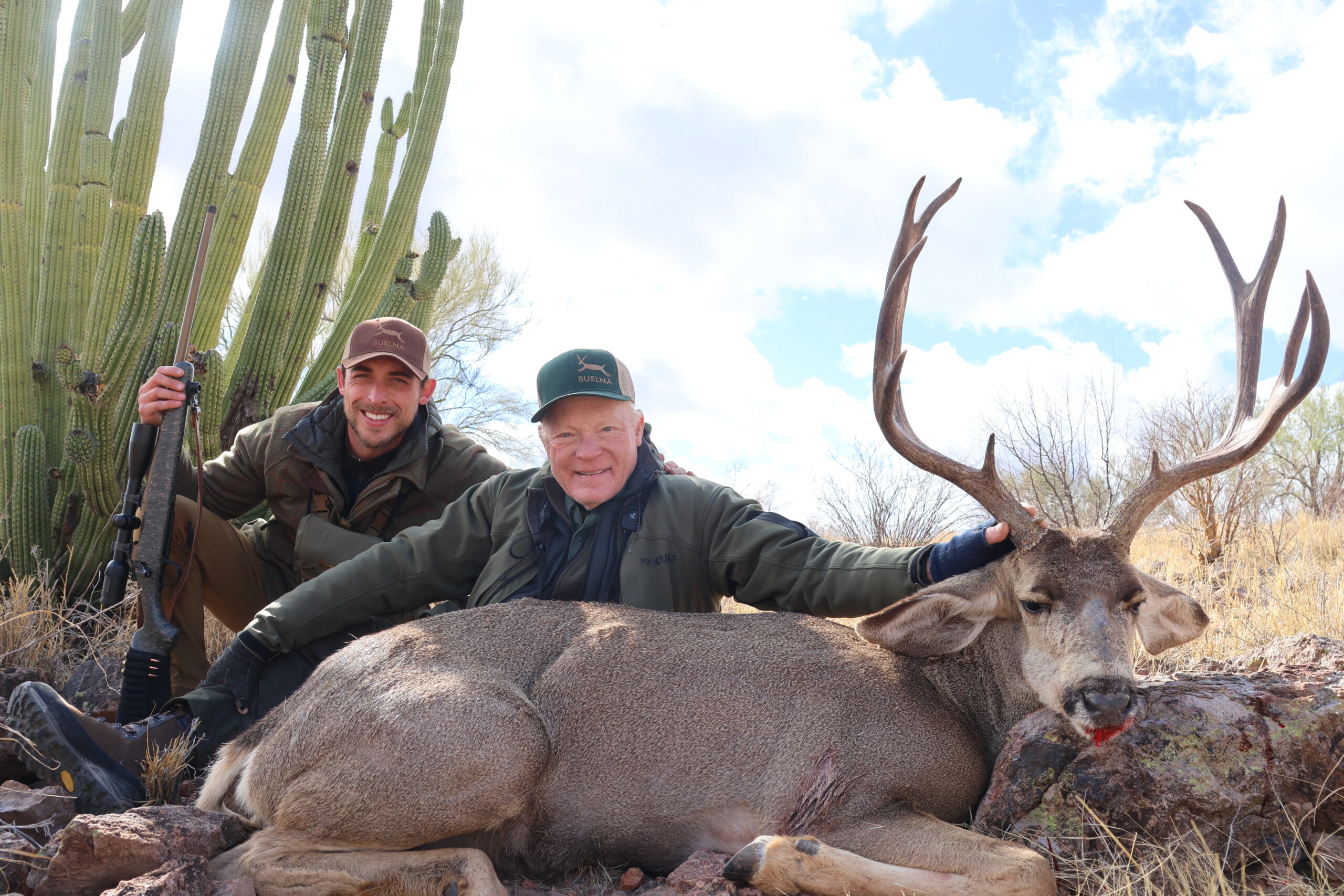American Hunter Gets All He Could Ask For In Plains Game Hunt
By Harry Morse
At the SCI Convention in February 2020, I booked a plains game hunt for two with Bronkhorst Safaris in South Africa with the option to upgrade to a Cape buffalo hunt.
Owner-operator Philip Bronkhorst said he worked with a concession bordering Kruger National Park near Malelane on the park’s southern border. They harvest six to eight mature trophy bulls a year, and he could get me one of the quota bulls. Elephants, lions and buffalo from Kruger move in and out of the ranch at times. It sounded perfect!
A month later, the pandemic hit. South Africa and much of the rest of the world closed down.
While bowhunting elk in the U.S. that fall, my hunting partner fell and fractured a vertebra in his neck. Badly injured, I rushed him to the hospital, praying he would not be paralyzed. His recuperation ruled out an international hunt in 2021. By June 2022, he was healed and we rebooked the hunt for July. We were finally going!
Covid hit me hard on June 10. On my doctor’s advice, I canceled the hunt, pending a full recovery. My hunting partner did not want to go alone and eventually lost his desire to go, canceling out completely.
In August I spoke with Bronkhorst: He had one buffalo left on quota on the massive ranch bordering Kruger National Park. Was I well enough to hunt and did I want the remaining buffalo on quota? The Kruger buffalo hunt was back on — a dream come true.

THE HUNT BEGINS
Two months later I was checking my rifle’s zero on the rifle range at the concession next to Kruger. Professional Hunter Tom Dryer suggested a quick tour of the 7-mile stretch of the concession boarding Kruger. The Crocodile River flowed 100 yards east of the concession boundary with Kruger, divided by an 8-foot tall fence, anchored with concrete footing and steel fence posts separating the concession from the park. It looked impenetrable.
Turning a bend in the rutted road, we ran directly into a maned lion gazing right at us. It either crawled under or crossed over by using one of breaks in the fence created by elephants.
Thirty minutes later a herd of Cape buffalo appeared out of thick brush, filing past us 80 yards away. A 40-inch-plus bull gave us a quick glance and disappeared into thick cover, igniting my anticipation. Tom said that it was too late to start tracking the bull because there was less than a half hour of daylight.
The next day was Sunday, and the concession owners didn’t hunt on the sabbath. So, we went next door to Kruger National Park to get a close look at the area’s spectacular wildlife. Kruger is a gem of Africa. Massive buffalo herds, big prides of lions, plains game in abundance, leopards, wild dogs and rhinos roam the park.
Our first sighting was a kudu sporting 56- to 60-inch horns with ivory-colored tips turning outward. Taking a kudu like this one is on my bucket list. Today I took pictures, but tomorrow on my side of the fence, I had one on quota.
Later in the morning a leopard suddenly appeared out of a small ravine while I was photographing a white rhino. It glided by us not 50 feet away, casually marking its territory. A white rhino and a leopard in the same place to photograph, it was fantastic luck. Later in the day a herd of over 100 buffalo crossed close in front of us. Glued to my binos, I asked Tom about the size of each of the bulls in the herd.
There was a massive 44- to 46-inch bull trailing the herd. Magnificent and intimidating, it ignored us. Topping off the day, a pack of rare wild dogs bedded down off a side road and gave me another stellar photo opportunity.
That night I rechecked and cleaned my rifle. A Browning A-Bolt .375 H&H Magnum with a stainless steel barrel, beautifully engraved and purchased at the Idaho Chapter of SCI’s annual banquet. It is an extremely accurate and beautiful rifle. It shoots a group the size of a quarter at 100 yards.
Recent rains leafed out the vegetation. It was hard to see more than 30 yards into the bush. Bronkhorst provided a second PH, Eddie Edward Greyling, at no charge to help us in these tight hunting conditions.
Buffalo hunting involves risk. No one downplays the dangers involved. It is simply a fact of buffalo hunting. Last year was an especially bad year for buffalo charges in the region. On May 4, a Kruger Park ranger was gored and killed by a buffalo. In June, a Limpopo rancher guiding a hunt was killed.
Driving onto the area we turned a corner and six bulls stood side-by-side at the edge of the thornbrush 30 yards away. Each carried 35-38 inches of jet black horns with deep curls.
Tom told me to study them closely because they all appeared to be just under the 40-inch mark I was seeking. Seconds later they pivoted and were gone. We continued on, looking for yesterday’s 40-plus-inch bull.

The first stalk was a muddy, wet affair in a steady drizzle. The herd of 15-20 cows and three big bulls were swallowed up by impenetrable, wet thornbrush. There was one dandy bull in the herd. We edged close enough to smell them, but we did not see them, so we backed out and moved on. Nothing was out moving except the Kruger Park fencing crew pouring concrete footings for steel fence posts to fix major breaks.
Long ago, elephants figured out how to push trees down onto the fence and climb over. Once a section of the fence is down and any electricity is disabled, game moves in and out of the park freely. This keeps landowners and park staff continually busy. So busy they installed digital monitoring devices alerting them to any section of fence knocked down. National Parks keeps an ultralight aircraft on the ranch to fly boundaries for various problems from escaping elephants, to helping poaching patrols and conducting game counts.
In the afternoon we encountered the culprits: two young elephant bulls who did the fence damage. Busily stripping bark from trees, they paid no attention to us. We gave them a wide berth. The park service could deal with them.
We stayed at Boulders Lodge just outside the park. That evening it was great to change into dry clothes, take a hot shower, sip a sundowner and feast on roasted eland steaks. Over dinner, we discussed how the lion, elephant and buffalo encounters were exactly what I came for. Now we needed a 40-inch buffalo.
The next two days passed without a shot opportunity. We saw big bulls, tracked and chased them into the dense brush. I passed on a big kudu bull in thick brush since we couldn’t determine the horn size. A hole in the brush presented a shoulder shot at less than 15 yards. I hesitated, and it bolted away. Tom then got a quick look at the horns and said, “You should have shot it.”

LUCK TURNS OUR WAY
The rain let up, the sun came out and animals moved out of wet dripping brush and into small clearings. Returning to the area we initially saw the first big bull at, we found the same herd crossing a dirt track 100 yards in front of us. Ready to roll this time, we jumped off the truck and cut into the brush to get ahead of them. Tom found a perfect shooting lane, opened up the shooting sticks and told me to get ready.
First came cows, calves and small bulls. The bigger bulls came last. Two nice bulls crossed. Tom told me to wait — the biggest one was coming. The one with the wide-sweeping horns stepped out, stopped and looked right at us. I squeezed the trigger and the bull crow-hopped, ran to the right and the herd scattered.
The frontal shot was two hands below the chin directly into the vitals. Later, the video showed the blood spurting out of its chest as it ran off.
There was a good blood trail. Tom heard the death bellow. I didn’t because my ears were still ringing from the shot. Fifty yards into the brush, the bull lay dead facing away from us. The problem was the three other bulls surrounding him with a “I am going to kill you attitude” that Robert Ruak had so aptly described.
They milled back and forth, not wanting to leave. Things were tense when the trackers picked up stones and started throwing them over our heads at the bulls. Two volleys of stones and the confrontation was over. The bulls left. Forget a 300-grain A-Frame Solid. Throw rocks!
Then it was time for high fives and congratulations. The wide-sweeping horns were exactly what I hoped for. And better yet: a one-shot kill. It was a magnificent bull with horns just shy of 42 inches. We stayed on guard until they could work the Toyota Land Cruiser through the brush, cutting a way in and loading the bull.

A KUDU ON THE RIDGE
The tension of the buffalo hunt seeped away, and it was time to hunt kudu. While this area was a great place to hunt kudu when the leaves were off, it was now almost impossible to see 50 yards. The kudu bulls were herded-up and in thick brush. It would be a toss-up if we got another chance at a big bull.
A quick phone conference with Philip Bronkhorst and PH Eddie Greyling and the decision was made to leave the next morning at 4:30 and drive seven hours to home base and hunt a big ranch in the Limpopo where Eddie grew up.
Eddie took over as lead PH. He knew a ridge big kudu retreated to at sunset, but it was a tough time to shoot a kudu. We definitely needed some luck to get a crack at a big kudu. They may strut across the road in Kruger National Park but not on hunting areas.
Luck came when the skies cleared, and a 60-degree day set in. Over the next two days, we spotted one or two mature bulls each morning and evening. The bulls were still in thick cover and did not present a good shot. We just had to find a bull in an opening.
We were running out of time. It was my last hunt day, so we headed out before dawn and took box lunches. It was going to be a great day of hunting since the sun didn’t go down until after 7:30 p.m.
By midday it looked like Eddie’s ridge hunt would be the last resort. We were seeing only fleeting butts of kudu disappearing into dense brush. We studied one too long and it disappeared. We took a lunch break by a water hole, hoping something might come in. Nothing.
At sunset, just as Eddie predicted, a mature bull worked its way along the ridge line through the brush, trees and rocks towards us. It was an easy shot at a beautiful bull, wrapping up a stellar African hunt.

Harry Morse is a Life member from Idaho and a former California Department of Fish and Game officer.




